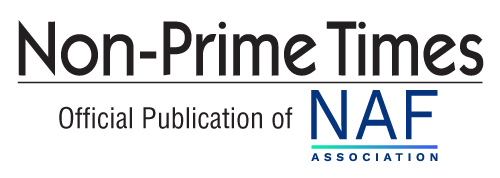For a while now, automotive retail at the consumer level has been focused on bringing more digitization into the customer experience. It is easier to shop online for a car or truck today, and this process has been made possible because auto retailers and their lender partners are adopting more of a digitized environment necessary for all of their back-office processes, as well.
However, ongoing consumer preferences and economic changes today are inspiring automotive captives and their loan origination partners to make even more investments in their digitization plans, especially with the rise of more electric vehicles and creative fintech solutions. And regardless of whether manufacturers work through traditional dealers or go more of a direct-to-consumer route via new OEM shopping platforms, the need for more digitization is required for captives and their partners to compete.
Captives and their partners are realizing that these new digitization strategies are important because the technologies involved create more efficiencies in the overall shopping and lending experience for consumers. The industry understands that car production, shopping and finance are all siloed, but for consumers they see it as one overall experience. By digitizing each of the processes working behind the scenes, captives and their partners can improve this experience for consumers.
What goes into improving the back-end process?
For all the talk of consumer-facing digital retailing, there are hundreds of other moving parts working behind the scenes that make up the less glamorous parts of the process, and many components of the processes between dealers and captives remain largely paper-based, unsecure and inefficient or clunky. And even those systems that are using a more digitized process continue to suffer from a fragmented system using disparate technologies and platforms that severely hamper the broader experience for everyone involved.
Historically, dealers and their captive partners relied on paper-based documents but these have become inefficient with compliance risks as everything is managed on the back end. Examples include photocopies of customers drivers’ licenses sitting on the copier or a salesperson’s desk; deal jackets sitting on an F&I manager’s desk with the door open to the office; and paperwork taken to the driveways of unverified customers for wet inked signatures. This results in customers with envelopes and throwing them in the glove box. Packages of contracts are sent to lenders via mail. And of course the back room with years and years of deal jackets.
Digitization of the entire process will solve several key pain points for captives and their strategic partners. First and foremost, digitization will significantly improve the risk and liability of exposed PII (personally identifiable information) in a paper-based environment. There are also major inefficiencies and added costs to manage paper, keeping up with revisions, etc. What’s more, a paper-based environment often results in outdated contracts used, which usually leads to lender rejections, and documents returned to the dealer which further increases the risk of exposure.
Captive lenders have recognized the importance of evolving from paper only, as seen with the emergence of eContracting solutions. This has been further promoted and incentivized by captive lenders to help more franchise dealerships to adopt. Lenders and dealers have seen significant enhancements here by way of faster processing, streamlined workflows and a more reliable, trusted document handling system. This is also a great area of focus for those manufacturers who rely on captives when working directly with consumers, such as today’s leading electric vehicle companies.
Additional solutions exist, from digital signatures, to leveraging digital vaults to protect who has access to documentation or digital transfer between the dealer and lender to get a contract funded. And ultimately, the ability for documents to be created so captive lenders can digitalize and securitize assets. There is a future of paperless and efficient process that can be achieved in the ecosystem – backed by the security of a documented audit trail.
The next phase of digital transformation for captives will leverage technologies such as e-contracting, multi-channel origination, digital certainty, auditing, document governance, security, post-transaction asset management and analysis tasks across all parts of the document journey.
Covering all bases in this new digital ecosystem
To overcome these challenges, captive lenders and their partners are building digital ecosystems that are purpose-built to handle the auto finance industry’s origination channel diversity, eliminating the complexities around managing various multi-channel assets post-execution, and drastically reducing operational and time costs.
This process allows for improved visibility of assets, quick expansion of the investor and lender pool, agility, and the ability to scale quickly and dynamically.
It also provides the assurance of legal and regulatory compliance, enabling captive lenders to securely manage digital assets throughout their entire post-execution lifecycle through an electronic collateral control agreement (ECCA).
This advanced process will offer centralized data management across an entire portfolio, allowing automotive professionals to view metadata across various origination channels and asset classes.
What’s more, it will help to control and track access, manage status changes, and transfer control of digital documents while utilizing sophisticated granular controls and permissions to allow for departmental separation and visibility. All of this will result in improved speed and process efficiency, and for lenders particularly it will free up capital through syndication, sale, or securitization.
With these enhancements the industry can boast about its digital transformation on the front end of the consumer transaction, and also in the back office between dealers, captive lenders and partner companies and regulators.



